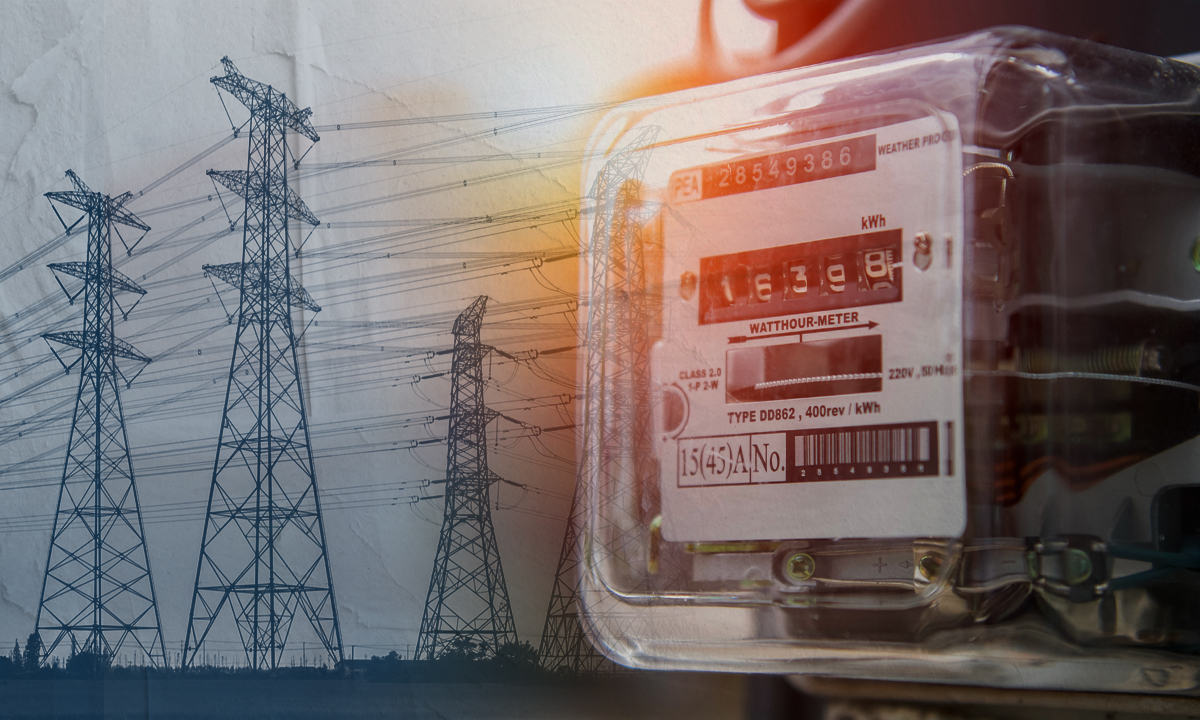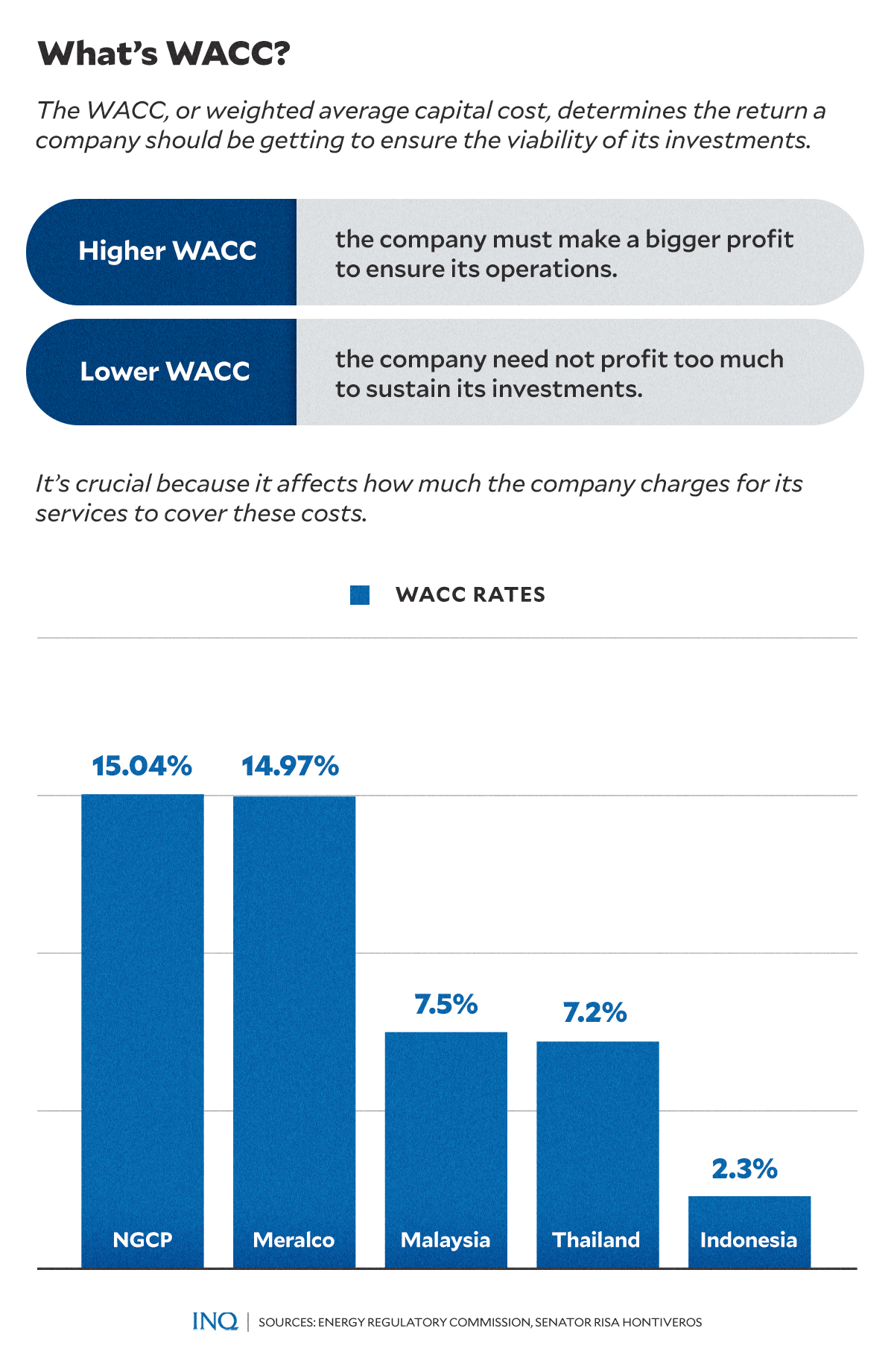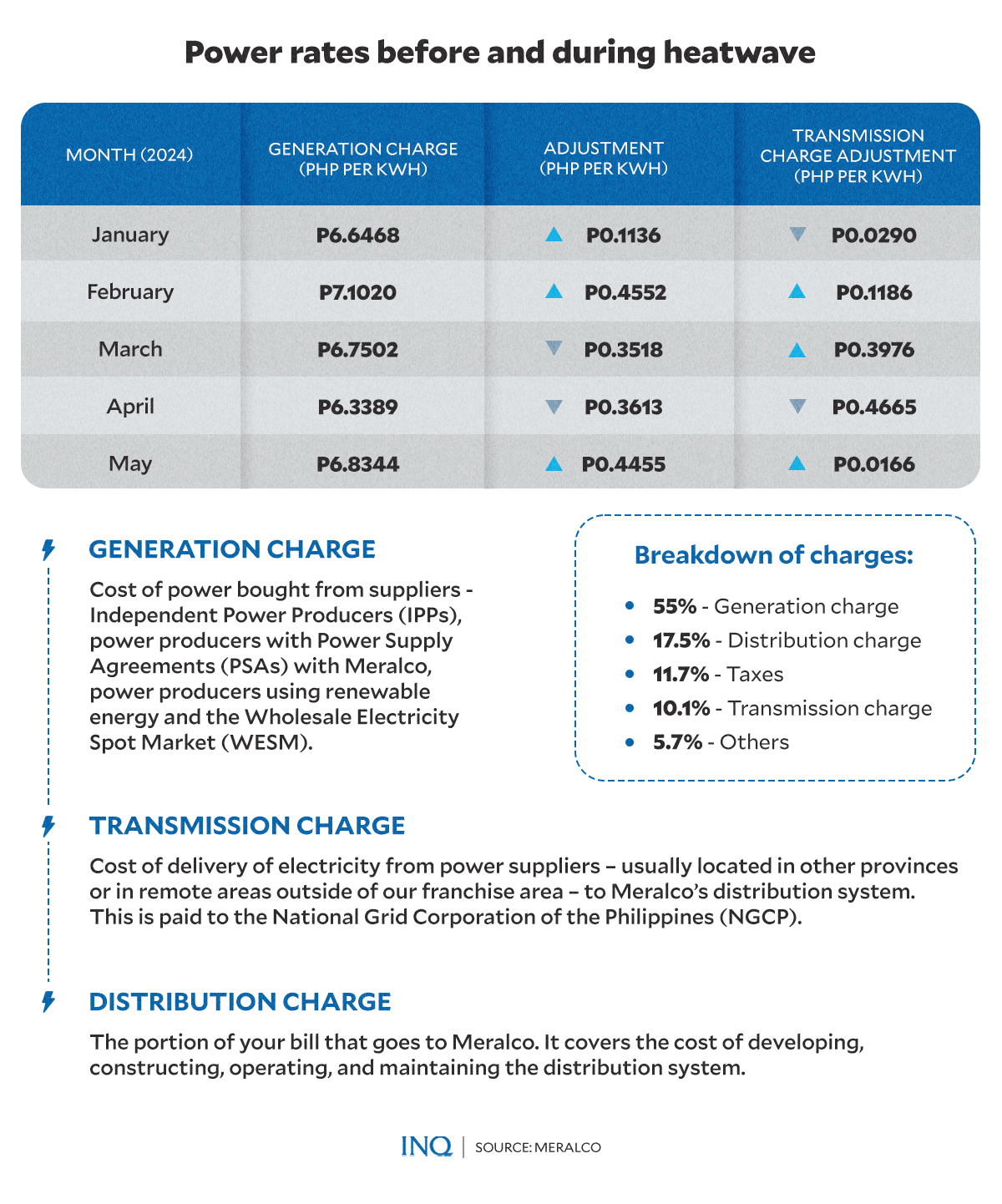Understanding power rates: Impact of WACC, generation costs
MANILA, Philippines—As many parts of the country continue to experience power outages caused by a significant supply shortage, triggered by an increase in electricity demand amid consistently high temperatures, it becomes crucial to understand the factors that determine power rates.
In April, an unprecedented heatwave across the country was coupled with a deteriorating power supply, causing power outages across various regions. This resulted in many areas being without electricity for several hours or days while people try to deal with record-high temperatures.
READ: EXPLAINER: Prevent heat exhaustion, heat stroke, other related illness
The National Grid Corporation of the Philippines (NGCP) employs a color-coded alert system to signal grid health: Red alert for severe power deficits that may cause brownouts, and yellow alert for low reserves that risk power disruptions if conditions deteriorate.
This alert system serves as a guide to grid health and informs the public and stakeholders of the current energy status.
Article continues after this advertisementIn April, frequent yellow alerts were issued across Luzon and Visayas grids, highlighting the system’s vulnerability during this period of strained energy resources. The following month, the Luzon grid was placed on red and yellow alerts for four consecutive days.
Article continues after this advertisementREAD: Record PH heat drives power supply alerts, bares grid weaknesses
READ: Luzon grid on yellow alert — NGCP
However, despite the power outages, power consumers noticed a slight increase in their electricity bills in May. In a statement, Meralco explained that for residential customers consuming 200 kWh, the adjustment is equivalent to an increase of around P92 in their total electricity bill.
This has led some consumers to wonder: Why did their electricity bills increase despite the power outages?
In this article, INQUIRER.net aims to explain and break down the concepts of generation costs, Weighted Average Cost of Capital (WACC), and the other key factors that influence electricity pricing.
Understanding generation charge
Meralco announced an increase of P0.4621 per kWh in May, bringing the overall rate for a typical household to P11.4139 per kWh from P10.9518 per kWh in April.
The generation charge is the cost of producing electricity, accounting for more than 50 percent of consumer’s electricity bills. This charge includes the cost of power purchased from various suppliers such as:
- WESM (Wholesale Electricity Spot Market): A market where electricity is traded, and prices are determined by supply and demand. When supply is tight, prices go up.
- PSA (Power Supply Agreement): Refers to the contracts between power producers and utilities like Meralco to provide a certain amount of electricity at agreed prices.
- IPP (Independent Power Producers): Private companies that generate electricity and sell it to utilities and other consumers.
The generation charge fluctuates based on the cost of fuel, the foreign exchange rate, and other market conditions.
The power distribution giant attributed the said increase last month to higher generation costs, which went up by P0.4455 per kWh, primarily driven by higher costs from the WESM and PSAs — as well as rising fuel prices and a weaker peso.
Moreover, Meralco explained that the tight power supply played a significant role in the increase in generation charges.
“Charges from WESM went up by P1.7913 per kWh due to tight supply conditions in the Luzon grid during April, as demand increased by 2,401 MW. There were several days with Yellow and Red Alerts, signaling critical power supply levels,” Meralco said.
What is WACC?
The WACC determines the return a company should be getting to ensure the viability of its investments. A higher WACC means the company needs to make a bigger profit to ensure its operations. A lower WACC indicates that it need not profit too much to sustain its investments.
For utility companies like Meralco, this cost influences how much they charge their customers. Think of WACC as the interest rate on a loan a company needs to repay its investors. If the interest rate is high, the company needs to charge more to cover this cost
In terms of its impact on consumers, a high WACC indicates that consumers may experience higher costs for the company’s products or services. On the other hand, a low WACC means consumers may benefit from more stable or lower prices for the company’s products or services.
Last year, lawmakers attributed the power rate hikes to the WACC that is too high — which is then passed on to customers.
READ: A year after SC OK of Meralco power rate hike, complaints, accusations persist
In October 2023, Senator Risa Hontiveros pressed the Energy Regulatory Commission (ERC) to complete and release the results of its “long-promised” reset of the WACC for both transmission and distribution charges, which have directly contributed to rising power costs.
“In this economic crisis, fixing the WACC rates will significantly help in lowering the transmission and distribution costs being passed on to consumers every month,” Hontiveros said.
Hontiveros pointed out that the WACC rates set for NGCP (15.04 percent) and distributors like Meralco (14.97 percent) are “shockingly excessive” when compared to WACC rates allowed in neighboring countries such as Malaysia (7.5 percent), Thailand (7.2 percent), and Indonesia (2.3 percent).
Meralco clarified that the ERC is responsible for determining the WACC and explained that the last approved WACC was the lowest provided by the regulator. It added that it had not had “a determined WACC since July 2015 because there was no completed rate reset during that regulatory period up until now.”
Breaking down electricity bill
According to Meralco, a consumer’s electricity bill is composed of several charges:
- Generation charge: This fee covers the cost of electricity purchased from suppliers. It includes power from IPPs, PSAs, and WESM.
- Transmission charge: This is the cost associated with transporting electricity from power plants to distribution networks.
- Distribution charge: This fee is for the delivery of electricity from distribution networks directly to your home. Notably, the distribution charge by Meralco has not changed since August 2022.
READ: Meralco hikes electricity rate by 46.2¢ per kWh
- System loss charge: This charge compensates for electricity lost due to technical issues and theft, known as system losses.
- Taxes and other fees: This includes all government taxes, universal charges, and the Feed-In Tariff Allowance (FIT-All).
- Metering charge: This covers the expenses related to reading, operating, and maintaining the power metering facilities and equipment, along with other costs related to metering services.
- Supply charge: This fee covers the cost of services provided to customers, including billing, collection, customer support, and other related services.
A huge chunk of the electric bill is from the generation charge (55 percent), followed by the distribution charge (17.5 percent) and taxes (11.7 percent).
A working paper published by the Ateneo Center for Economic Research and Development (ACERD) detailed that in 2020, a typical residential customer in Meralco’s franchise area consuming 200 kWh monthly would have had a bill of around P1,700.
“This household would typically have a refrigerator, electric fan, flat iron, TV set, and radio,” the working paper described.
In 2020, the breakdown of the electricity bill was as follows: 51 percent for generation charges, 21 percent for distribution charges (including supply and metering), 9 percent for transmission charges, and about 4 percent for transmission losses.
Another hearing?
Last month, Parañaque City 2nd District Rep. Gustavo “Gus” Tambunting said another hearing might be set to discuss the supposed delay on Meralco’s rate reset process.
Citing a study conducted by the International Energy Consultants (IEC), Meralco clarified that its rates “are fair and reasonable since they reflect the true cost of electricity” compared to other countries’ power costs, which it said “are heavily subsidized by their governments.”
“[W]e Filipinos pay for the true cost of electricity and it would be a disservice to the truth to simply compare our power rates to other countries without any context,” said Meralco vice president Joe Zaldarriaga.
“The energy industry landscape is different for each country and should be viewed more comprehensively to avoid misconceptions and come up with accurate conclusions,” he added.
Meralco’s franchise is set to expire in 2028.


